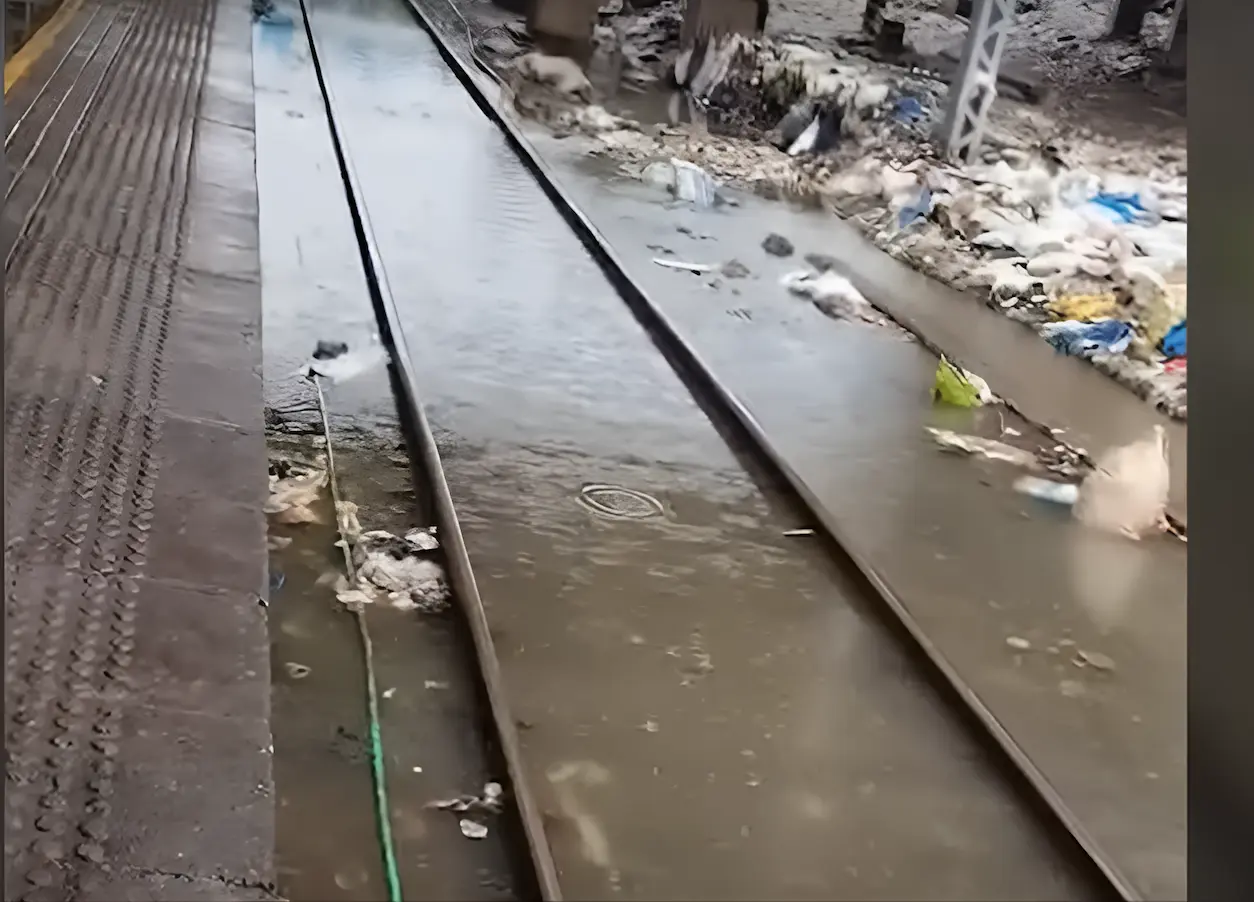
Despite decades of criticism, Mumbai’s drainage system remains outdated, leading to severe waterlogging every monsoon (image- videograb Firstpost)
Mumbai Drainage Disaster – Mumbai, India’s financial capital, is once again submerged under monsoon rains. Streets are flooded, transportation is crippled, and citizens are left frustrated. Despite decades of criticism from experts and residents, the city’s drainage system remains outdated and ineffective. Why has no government been able to fix this crisis?
The Scale of the Problem of Mumbai drainage disaster
On May 26, 2025, Mumbai witnessed record-breaking rainfall, with areas like Nariman Point receiving 252 mm of rain, followed by Byculla at 213 mm. The heavy downpour led to waterlogging in key locations, including Dadar, Parel, Wadala, and Churchgate. Suburban train services were disrupted, and road traffic slowed to a crawl.
Civic Failures and Infrastructure Gaps
The Brihanmumbai Municipal Corporation (BMC) had set up 10 mini pumping stations to tackle waterlogging, yet four of them failed to operate effectively, leading to severe flooding. The operators at Hindmata, Gandhi Market, Yellow Gate, and Chunabhatti were penalized ₹10 lakh each for negligence.
Despite these measures, Mumbai’s drainage system remains outdated. The city’s stormwater drains, designed over a century ago, are incapable of handling the increasing rainfall intensity. Encroachments, poor maintenance, and clogged gutters further exacerbate the problem.
The Impact on Daily Life
The consequences of waterlogging are far-reaching:
- Transportation Disruptions: Suburban trains were delayed, and several flights were affected.
- Health Hazards: Stagnant water increases the risk of waterborne diseases.
- Economic Losses: Businesses suffer due to reduced footfall and logistical challenges.
Expert Opinions and Public Outrage
Urban planners argue that Mumbai’s drainage system is outdated and inadequate for handling extreme rainfall events. Dr. Ramesh Patil, a civil engineer specializing in urban infrastructure, stated, “Mumbai’s stormwater drains were designed over a century ago and cannot cope with today’s rainfall intensity. The city needs a complete overhaul of its drainage system.”
Citizens took to social media to express their frustration, with hashtags like #MumbaiFloods and #BMCFail trending on X (formerly Twitter). Filmmaker Vivek Agnihotri criticized the city’s infrastructure, calling it a “scam wrapped in a sham”.
Political leaders also weighed in. Maharashtra Deputy CM Eknath Shinde acknowledged the severity of the situation, stating, “Such heavy rainfall has not occurred in decades. We have deployed 66 pumps and sensors across the city to manage waterlogging.” However, opposition leaders like Aditya Thackeray slammed the government’s preparedness, arguing that pre-monsoon drain cleaning was neglected. Uddhav Thackrey’s government was a failure too.
Possible Solutions
To mitigate waterlogging, Mumbai needs:
- Upgraded Drainage Systems: Implementing modern stormwater management techniques.
- Strict Encroachment Policies: Preventing illegal constructions that block drainage paths.
- Regular Maintenance: Ensuring timely cleaning of gutters and sewers.
- Public Awareness Campaigns: Encouraging responsible waste disposal to prevent clogging.
Conclusion
Mumbai’s monsoon-induced waterlogging is not just a seasonal inconvenience, it’s a systemic failure. Until authorities take decisive action, the city will continue to suffer. The question remains: Will Mumbai ever be free from its monsoon misery?
3 thoughts on “Mumbai Drainage Disaster: Why Civic Negligence Fuels Monsoon Mayhem”